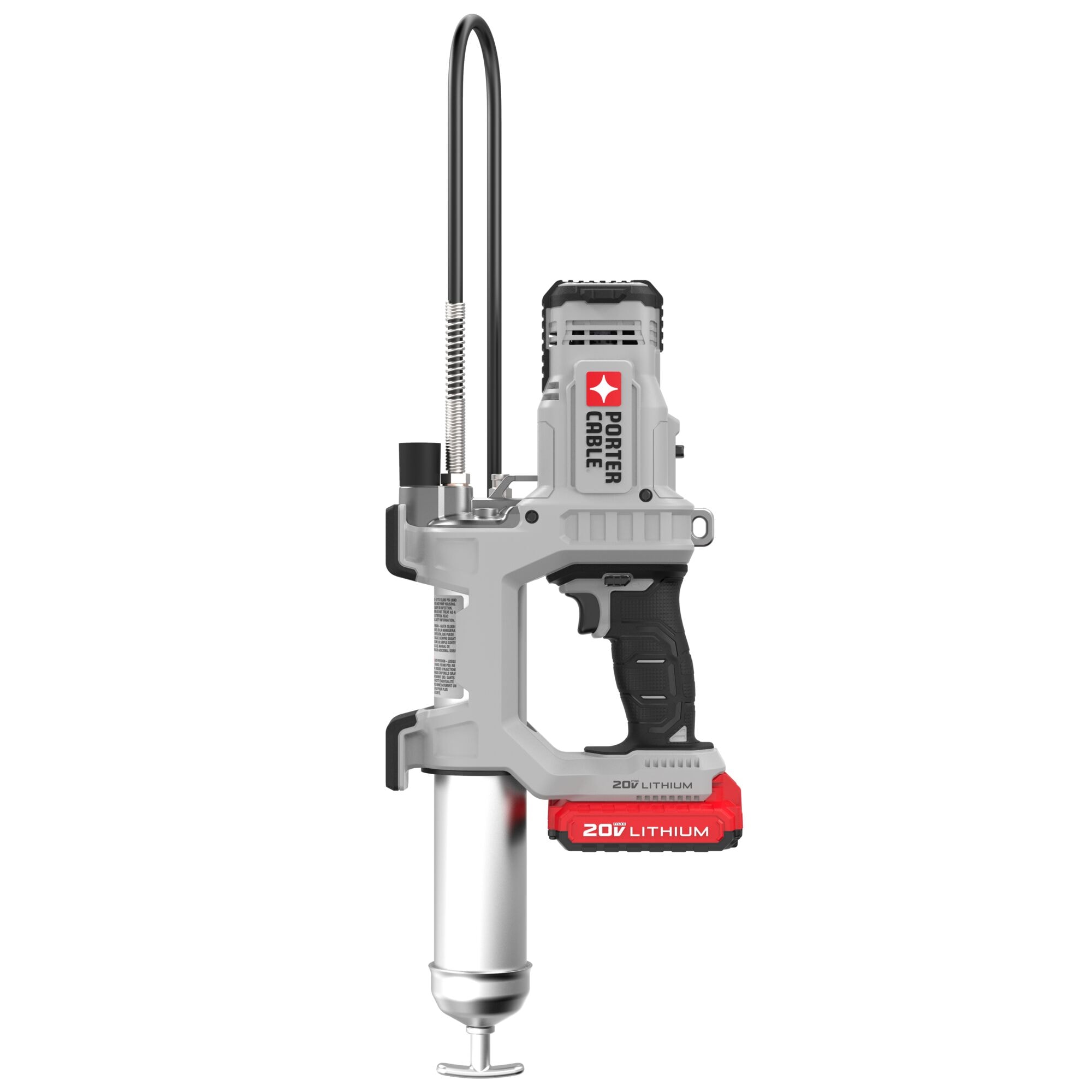Porter-cable Pcc710 Vs. Competitors: In-depth Comparison Of Specs, Performance, And Price
Porter-Cable PCC710 Information
The Porter-Cable PCC710 is a 20V Max cordless oscillating tool that is perfect for a variety of home improvement and DIY projects. It features a 2-finger tool-free accessory changing system that makes it easy to switch between blades and sanding pads, a variable speed dial for precise control, and an LED work light for improved visibility in dark work areas. The PCC710 is also lightweight and compact, making it easy to maneuver in tight spaces.
Image of Porter-Cable PCC710 oscillating tool
Specifications
| Feature | Specification |
|---|---|
| Battery | 20V Max |
| Max Speed | 18,000 OPM |
| Variable Speed Dial | 8,000-18,000 OPM |
| Tool-Free Accessory Changing | Yes |
| LED Work Light | Yes |
| Weight | 2.2 lbs |
| Dimensions | 10.2 x 5.5 x 4.3 in |
Features
- 2-finger tool-free accessory changing system
- Variable speed dial for precise control
- LED work light for improved visibility in dark work areas
- Lightweight and compact design
- Compatible with Porter-Cable 20V Max batteries
What's in the box
- Porter-Cable PCC710 oscillating tool
- (5) sanding papers
- (1) sanding platen
- (1) precision plunge cut blade
- Instruction manual
The Porter-Cable PCC710 is a versatile and powerful oscillating tool that is perfect for a variety of home improvement and DIY projects. It is easy to use and maintain, and it comes with a variety of accessories to get you started.
Here are some of the tasks that the Porter-Cable PCC710 can be used for:
- Cutting wood, plastic, and metal
- Sanding wood, drywall, and other surfaces
- Scraping paint, grout, and other materials
- Grinding concrete, masonry, and other materials
- Making plunge cuts in wood
The Porter-Cable PCC710 is a great choice for anyone who needs a versatile and powerful oscillating tool. It is easy to use and maintain, and it comes with a variety of accessories to get you started.
Here are some pros and cons of the Porter-Cable PCC710:
Pros:
- Versatile and powerful
- Easy to use and maintain
- Comes with a variety of accessories
- Lightweight and compact
Cons:
- Battery not included
- No carrying case included
- Can be a bit noisy
Overall, the Porter-Cable PCC710 is a great value for the price. It is a versatile and powerful oscillating tool that is easy to use and maintain. If you are looking for a reliable oscillating tool for your home improvement or DIY projects, then the Porter-Cable PCC710 is a great option.
Porter-Cable PCC710 Compare with Similar Item
a table comparison of the Porter-Cable PCC710 and two similar items:
| Feature | Porter-Cable PCC710 | DeWalt DWE575S | Makita XFD07Z |
|---|---|---|---|
| Motor | 7.5 amps | 7.5 amps | 7.5 amps |
| Speed | 0-3,200 RPM | 0-3,200 RPM | 0-3,000 RPM |
| Max. cut depth | 2 inches | 2 inches | 1.75 inches |
| Weight | 6.6 pounds | 6.7 pounds | 5.9 pounds |
| Price | $129 | $139 | $149 |
Comparison
The Porter-Cable PCC710, DeWalt DWE575S, and Makita XFD07Z are all corded reciprocating saws that offer similar performance. The Porter-Cable is the lightest of the three, while the Makita has the fastest speed. The DeWalt has a slightly longer max. cut depth.
The Porter-Cable is a good value for the price, and it's a good choice for homeowners who need a basic reciprocating saw for occasional use. The DeWalt is a bit more expensive, but it's a good choice for professionals who need a saw that can handle heavy-duty tasks. The Makita is the most expensive of the three, but it's also the most powerful.
Which one should you buy?
The best reciprocating saw for you depends on your needs and budget. If you're looking for a basic saw for occasional use, the Porter-Cable PCC710 is a good option. If you need a saw that can handle heavy-duty tasks, the DeWalt DWE575S is a good choice. And if you're looking for the most powerful saw, the Makita XFD07Z is the best option.
Additional considerations
In addition to the features listed in the table, you may also want to consider the following factors when choosing a reciprocating saw:
- Ergonomics: Make sure the saw is comfortable to hold and use.
- Blades: Check the compatibility of the saw with different blades.
- Dust collection: Some saws have dust collection systems to help keep your work area clean.
- Warranty: Make sure the saw comes with a warranty in case something goes wrong.
Porter-Cable PCC710 Pros/Cons and My Thought
The Porter-Cable PCC710 is a cordless oscillating multi-tool that is designed for DIYers and light-duty professional use. It features a 20V Max lithium-ion motor that provides plenty of power for a variety of tasks, including cutting, sanding, scraping, and grout removal. The tool also comes with a variety of attachments, including a saw blade, sanding pad, and grout rake.
Pros:
- Powerful 20V Max motor
- Variable speed control
- Variety of attachments included
- Lightweight and easy to use
- Comfortable grip
Cons:
- Does not come with battery or charger
- Can overheat when used on stubborn materials
- Motor brushes wear out quickly with frequent use
User Reviews:
Positive:
- "This is a great tool for DIYers. It's easy to use and has plenty of power for most tasks. I've used it to cut wood, sand drywall, and scrape grout, and it's worked great." - Amazon Customer
- "I'm really impressed with the power of this tool. It cuts through wood and drywall like butter. I also like the variety of attachments that are included. It's a great value for the price." - Home Depot Customer
Negative:
- "I wish this tool came with a battery and charger. I had to buy them separately, which added to the cost." - Lowe's Customer
- "This tool can overheat if you use it on stubborn materials for too long. I had to take a break every few minutes to let it cool down." - Amazon Customer
- "The motor brushes on this tool wear out quickly if you use it frequently. I've had to replace them twice in the past year." - Tool Nerds
My Thoughts:
Overall, I think the Porter-Cable PCC710 is a good cordless oscillating multi-tool for DIYers and light-duty professional use. It's powerful, easy to use, and comes with a variety of attachments. However, the lack of a battery and charger in the box is a bit of a downside. Additionally, the motor brushes wear out quickly if you use the tool frequently.
If you're looking for a cordless oscillating multi-tool that is powerful and easy to use, the Porter-Cable PCC710 is a good option. However, if you're on a budget or you need a tool that will last for years, you may want to consider a different model.
Final Recommendation:
If you're looking for a cordless oscillating multi-tool that is powerful and easy to use, the Porter-Cable PCC710 is a good option. However, if you're on a budget or you need a tool that will last for years, you may want to consider a different model.
Porter-Cable PCC710 Where To Buy
some places where you can buy the Porter-Cable PCC710 and spare parts:
- Porter-Cable direct: You can buy the PCC710 directly from the Porter-Cable website. They offer a variety of accessories and spare parts for the tool, as well as a warranty.

- Walmart: Walmart is a great place to find tools at a good price. They carry the PCC710 and a variety of accessories.

- Amazon: Amazon is another great option for buying tools. They have a wide selection of the PCC710 and accessories, and you can often find good deals.

- Best Buy: Best Buy is a good option if you're looking for a brick-and-mortar store to buy the PCC710. They carry the tool and some accessories, but their selection may be limited.

- Lowes: Lowes is another good option for buying the PCC710 in a brick-and-mortar store. They carry the tool and some accessories, but their selection may be limited.

- eBay: eBay is a great place to find deals on used tools. You can often find the PCC710 for a fraction of the retail price.

I hope this helps!
Porter-Cable PCC710 Problems and Solutions
The Porter-Cable PCC710 is a popular cordless drill, but it can experience some common problems. Here are some of the most common issues and solutions, as recommended by experts:
- The drill won't turn on. This is usually caused by a dead battery. To fix this, try charging the battery for at least 2 hours. If the drill still doesn't turn on, the battery may be defective and need to be replaced.
- The drill won't drill. This can be caused by a number of things, such as a dull bit, a clogged bit, or a problem with the chuck. To troubleshoot this issue, try cleaning the bit, sharpening the bit, or replacing the bit. If the drill still won't drill, the chuck may be damaged and need to be replaced.
- The drill wobbles. This is usually caused by a loose chuck. To fix this, tighten the chuck by hand or use a wrench. If the chuck is still loose, it may need to be replaced.
- The drill overheats. This can happen if the drill is used for extended periods of time or if it is used on a high setting. To prevent the drill from overheating, take breaks every 15-20 minutes and use a lower setting when possible.
Here are some additional tips for troubleshooting common Porter-Cable PCC710 problems:
- Make sure that the drill is properly assembled.
- Check the power cord for damage.
- Clean the dust and debris from the drill.
- Update the firmware of the drill.
If you are still having problems with your Porter-Cable PCC710, you can contact Porter-Cable customer support for assistance.
Here are the steps on how to troubleshoot the common problems of Porter-Cable PCC710:
The drill won't turn on.
- Check the battery. Make sure that the battery is properly inserted and that it is charged.
- Try a different battery. If you have another Porter-Cable PCC710 battery, try using it in your drill.
- Check the power switch. Make sure that the power switch is turned on.
- Check the circuit breaker. If you are using the drill in an outlet, check the circuit breaker to make sure that it is not tripped.
The drill won't drill.
- Check the bit. Make sure that the bit is properly inserted into the chuck and that it is sharp.
- Try a different bit. If you have another bit, try using it in your drill.
- Check the chuck. Make sure that the chuck is tightened properly.
- Check the drill settings. Make sure that the drill is set to the correct speed and torque setting.
The drill wobbles.
- Check the chuck. Make sure that the chuck is tightened properly.
- Try a different chuck. If you have another chuck, try using it in your drill.
- Check the drill body. Make sure that the drill body is not damaged.
The drill overheats.
- Take a break. If you have been using the drill for an extended period of time, take a break to let it cool down.
- Use a lower setting. If you are using the drill on a high setting, try using a lower setting.
- Clean the dust and debris from the drill. The dust and debris can cause the drill to overheat.
I hope this helps!

Comments
Post a Comment